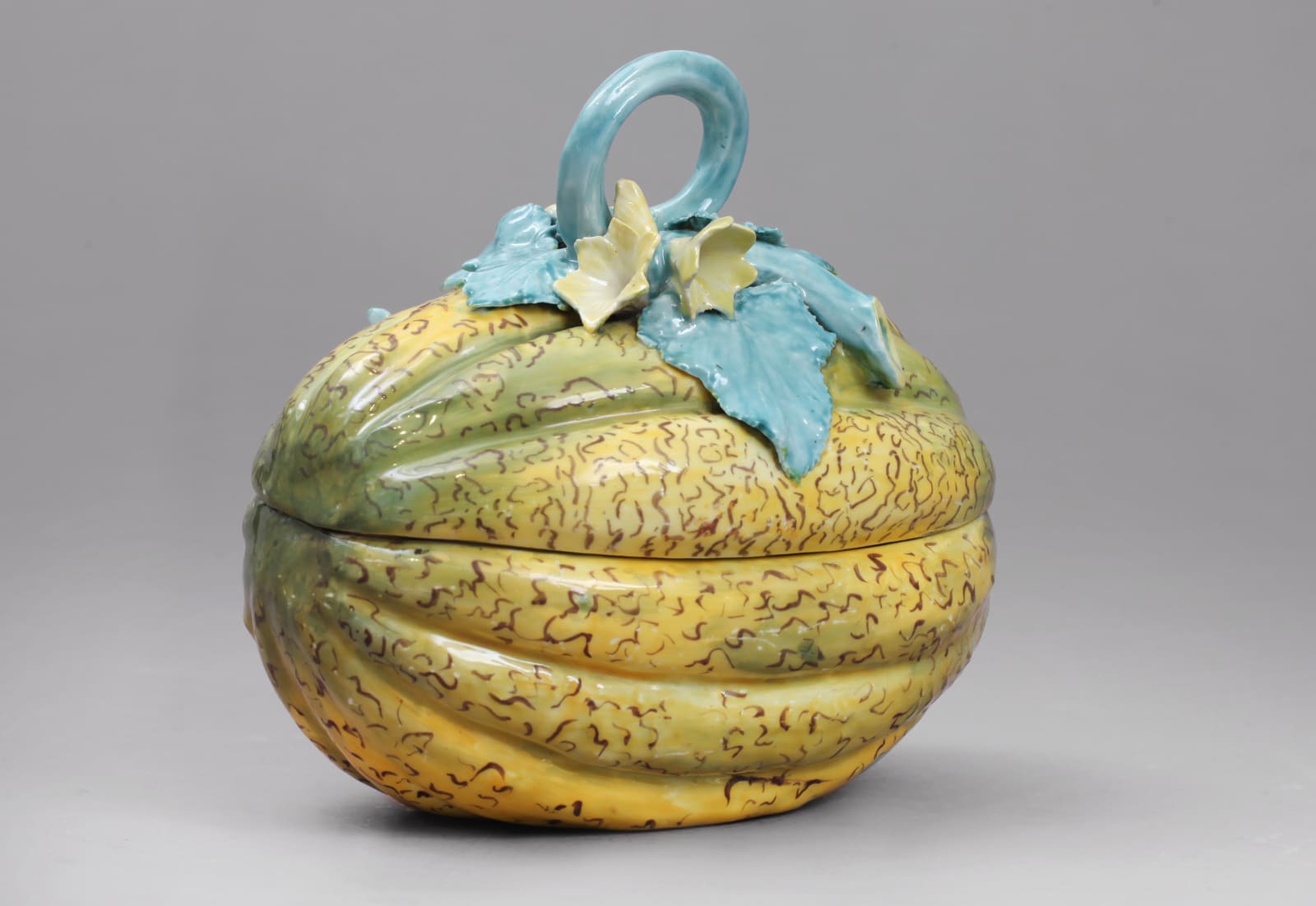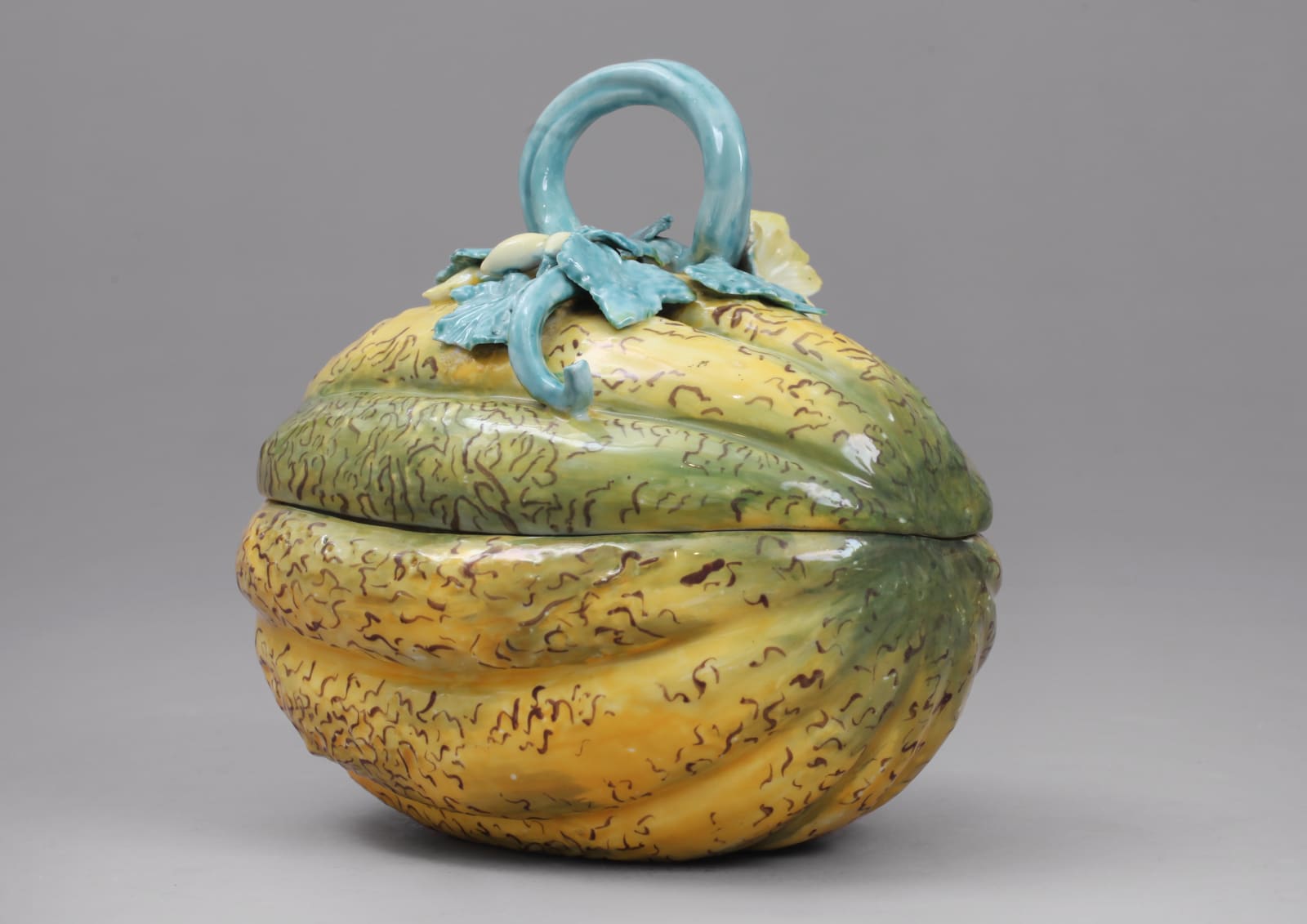

A rare Chelsea Porcelain Phytomorphic Melon Dessert Tureen and Cover, Circa 1754-56
A rare Chelsea Porcelain Phytomorphic Melon Dessert Tureen and Cover. Beautifully modelled with a high degree of natural accuracy, the lobed ripened fruit enamelled in tones of yellow and green with delicate brown and puce veining. The cover forming the upper part of the fruit, applied with leaves, flowers and buds together with a naturalistic hooped turquoise tendril forming the finial.
This example would appear to be a Cantaloupe Melon, named after one of the Pope’s country estates at Cantaloupo near Rome. The fruit was introduced into Italy from Armenia and was considered by Philip Miller, head gardener and curator of the Chelsea Physic Garden, to be the very best of the Melon varieties, he states, ‘The flesh of this Melon, when in perfection, is delicious and does not offend the most tender stomachs, so may be eaten with safety.’ Miller was particularly interested in growing melons and devoted 6 pages of his ‘Dictionary of Plants’ to their cultivation, thus there would have been an abundant supply of them growing in Chelsea at the time. Melon tureens are mentioned in the 1755 Chelsea Sale Catalogue, First Day's Sale, conducted by Mr Ford at his Great Room at the Haymarket, Monday, March 10th 1755, lot 38: "Two fine large cabbage leaves and 2 fine melons, for desart". In 1755 Benjamin Franklin, who clearly attended the sale, sent from London to his wife in America, Chelsea porcelain, ’Melons and leaves for a desert of Fruit and Cream or the like.’
Marks: Anchor mark picked out in red enamel to the inside of the cover.
Provenance
Private English CollectionJoin our mailing list
* denotes required fields
We will process the personal data you have supplied in accordance with our privacy policy (available on request). You can unsubscribe or change your preferences at any time by clicking the link in our emails.

